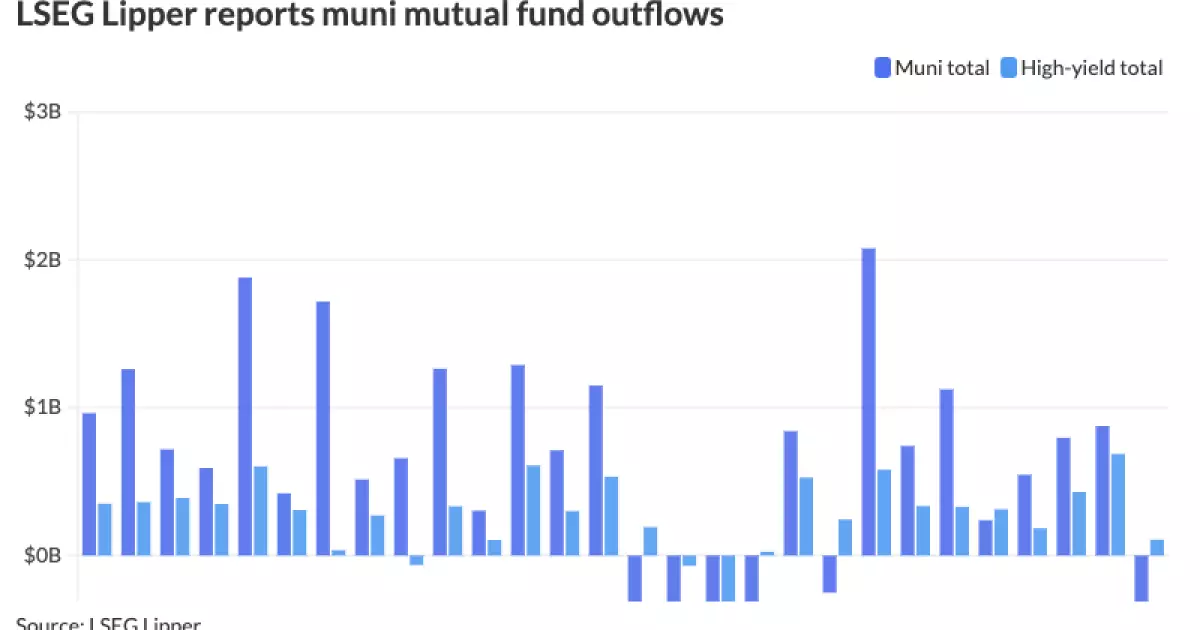The municipal bond market is often touted as a safe haven for conservative investors, with the promise of tax-exempt income and lower risks compared to other forms of investments. However, recent developments have exposed a less favorable picture, revealing a market fraught with volatility, supply imbalances, and growing uncertainty. These factors have catapulted the municipal bond landscape into a precarious environment. The reality is stark: investors need to reassess their strategies as the market shows signs of significant weakness.
The Supply-Demand Imbalance
One of the pivotal issues currently plaguing the municipal bond market is the classic economic principle of supply and demand. As highlighted by market analysts, there is an alarming surplus of supply devoid of corresponding demand—a scenario summarized chillingly as “more supply than demand.” With municipal issuers flooding the market with bonds, the result is downward pressure on prices and upward pressure on yields. There’s a tipping point approaching where investors may begin to question the very logic behind investing in these instruments.
Kim Olsan, a senior fixed-income manager, noted the severity of this predicament, highlighting that the fundamentals do not align for outperformance. Factors such as light redemptions and increasing supply go hand in hand with volatility seen in interest rates and equities. Such dynamics lead to a corrective tone in yields, notably in 10-year AAA spots which recently experienced a significant retracement in their earlier gains. Investors must be vigilant; if this imbalance continues, munis could face a severe downturn.
The Influence of Washington’s Policy Stance
The federal government’s policy position plays a crucial role in shaping the dynamics of the municipal bond market. Analysts point out that the administration’s aggressive stance has implications that ripple through both domestic and international economies. The concept of “no holds barred” is not just an abstract idea; it’s creating tangible effects in how markets operate, particularly in relation to the munis that are sensitive to UST (U.S. Treasury) volatility.
With the political landscape shifting frequently, many are left in a state of uncertainty, and such volatility does not favor retail investors. This can lead to a panic response that worsens market conditions, pushing yields higher and pushing investors away. Unless there is decisive action to stabilize this environment, the outlook for munis remains bleak.
The Threat to Tax Exemption
For many investors, the appeal of municipal bonds rests heavily on their tax-exempt status—an attractive feature that offers immense advantages, especially for high-income earners. However, with talk of eliminating this exemption gaining traction, the implications can be severe. Jeff Lipton, a notable market strategist, has indicated that this risk is more palpable today than ever. Should the tax exemption be partially or fully repealed, the demand for munis is likely to decline precipitously.
The impact of such a shift could extend beyond just retail investors; institutional appetite would also plummet. Institutions that leveraged tax-exempt bonds for their portfolios would find themselves re-evaluating strategies. They might turn to taxable options, which appear more appealing, particularly in an environment of rising interest rates.
Strained Infrastructure and Rising Needs
Beyond the economic indicators and policy discussions, there is a grim reality that further complicates the financial landscape: the pressing state of the nation’s infrastructure. Much of it is performing below average and requires massive investment, now more than ever. Natural disasters continue to exacerbate these needs, putting tremendous strain on our existing systems.
Amidst such pressures, those involved in financing these upgrades through municipals must navigate a complex web of market conditions that may deter investment. If the appetite for munis wanes due to policy changes, and we face an increasing demand for infrastructure investment, the municipal bond market could be staring into a chasm of need against dwindling support.
Investor Sentiment: A Cautious Approach
The current landscape has instilled a cautious sentiment among investors in the municipal bond space. This unease is reflected in the recent outflows from municipal bond mutual funds, amounting to millions in divestment, following a brief uptick in interest. Investors are wary; many are re-evaluating their positions in light of the ongoing turmoil.
As yields fluctuate and economic signals remain mixed, this sentiment indicates a fundamental shift in perspectives about risk and return. Investors need to adopt a more discerning approach, weighing both short-term fluctuations and long-term trends carefully. The wisdom lies in vigilance and adaptability as the challenges faced in this market require nimbleness, rather than a familiar inclination toward traditional strategies that may no longer yield fruit in such turbulent times.


Leave a Reply